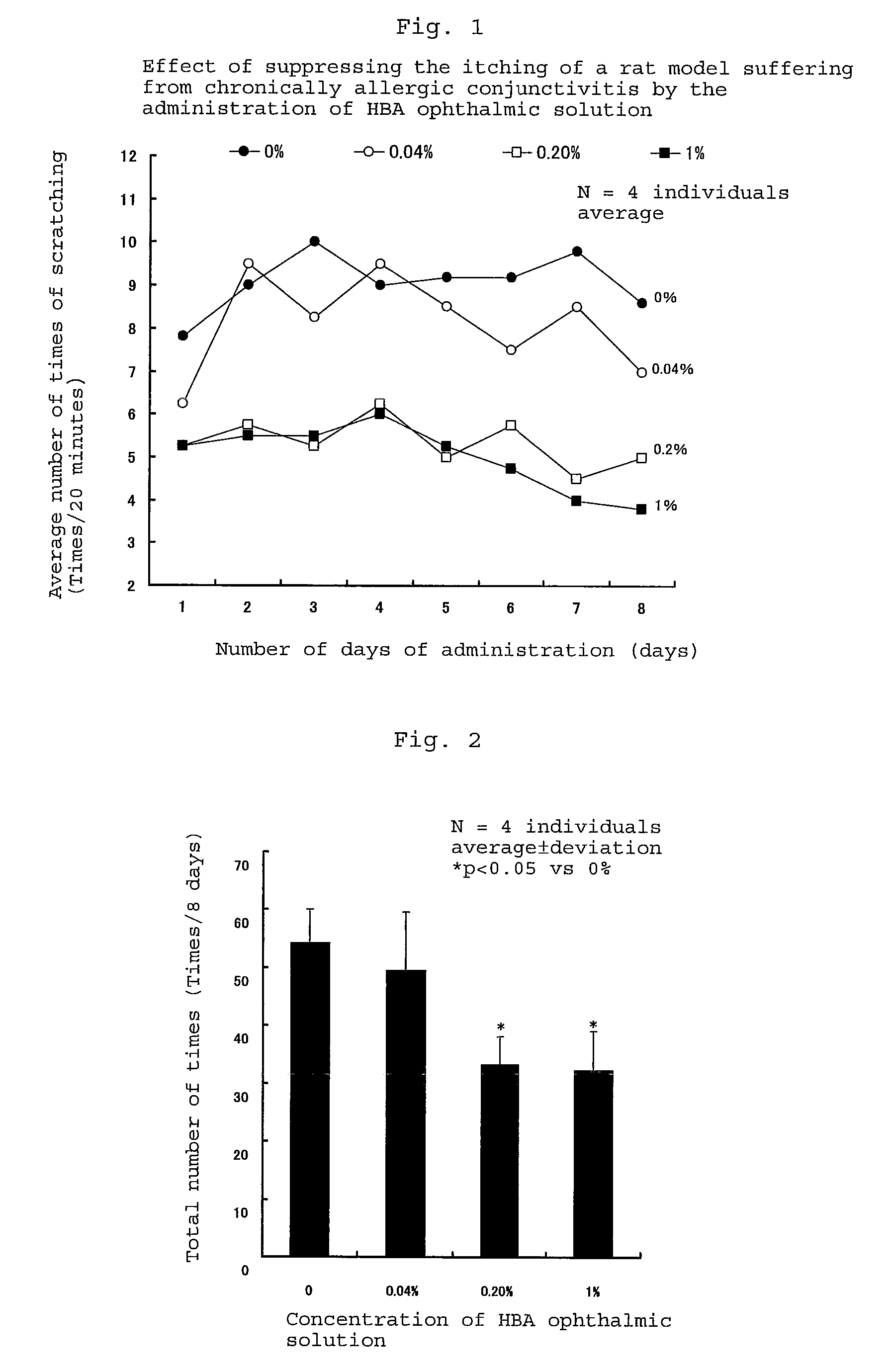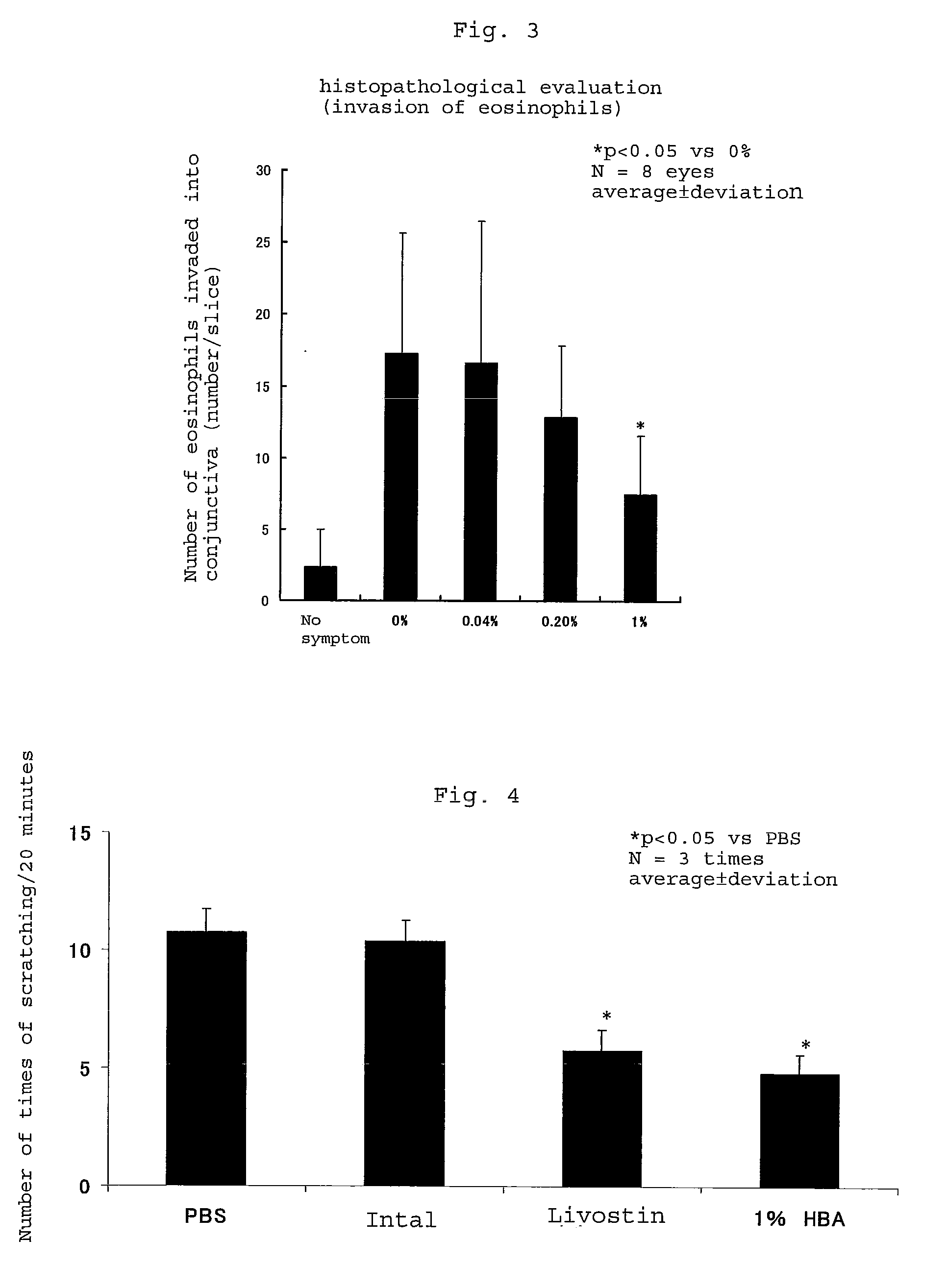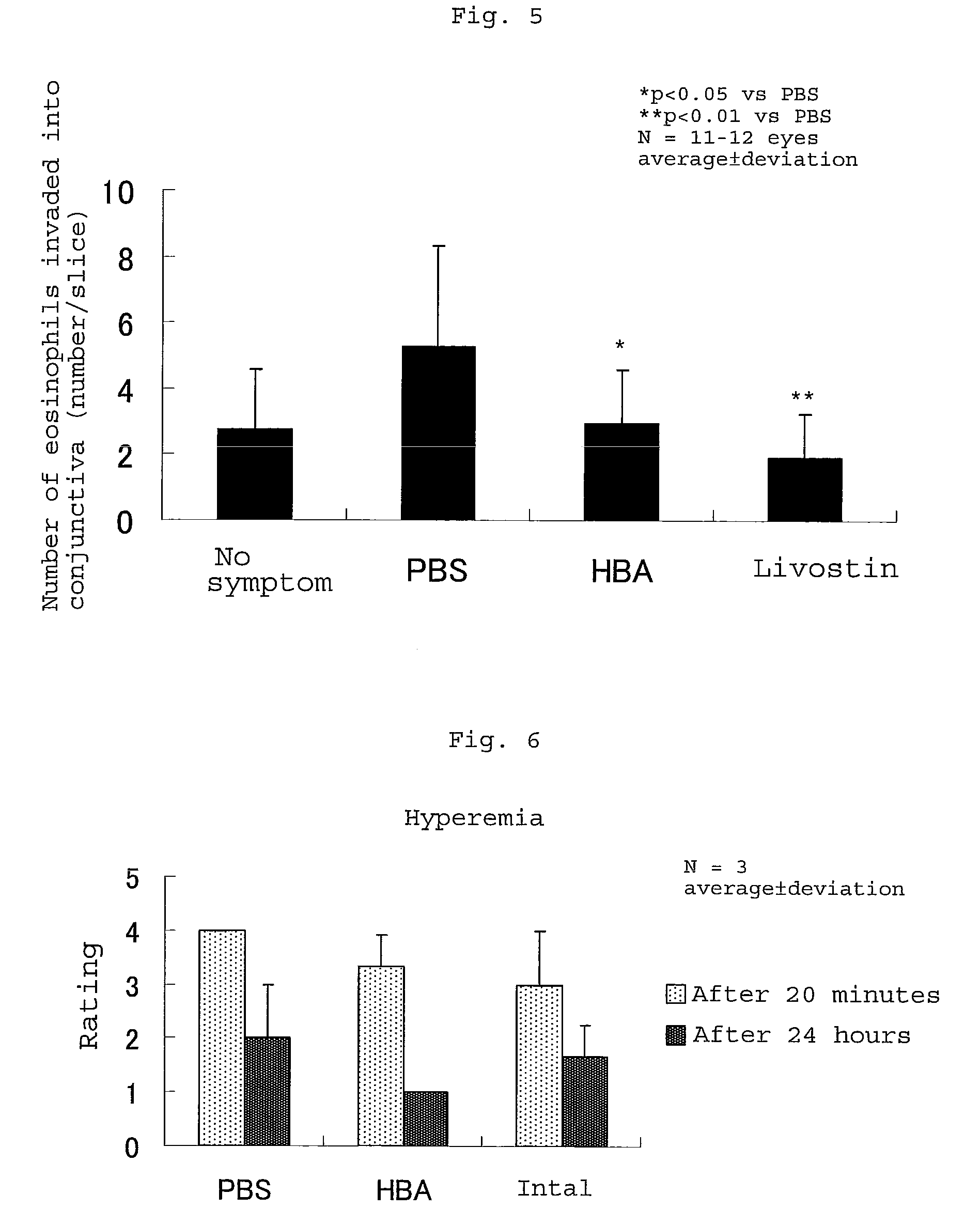Antiallergenic composition
a technology of composition and antiallergen, which is applied in the field of antiallergenic composition, can solve the problems of no study of the antiallergenic action of composition comprising hydroxybutyric acid and/or a salt thereof, and the social problem of pollinosis, and achieve the effect of safe antiallergenic composition
- Summary
- Abstract
- Description
- Claims
- Application Information
AI Technical Summary
Benefits of technology
Problems solved by technology
Method used
Image
Examples
example 1
[0037]The effect of suppressing itching and the effect of suppressing the invasion of eosinophils into the conjunctiva of the composition of the present invention which comprises D-3-hydroxybutyric acid as an effective component were investigated by using a rat model suffering from chronically allergenic conjunctivitis.
Method of Preparing Test Formulation
[0038]Test formulations No. 1 to No. 5 were prepared by dissolving components shown in Table 1 in purified water, controlling the pH of the resulting solution to 7.0 to 7.5 with an aqueous solution of diluted hydrochloric acid or diluted sodium hydroxide and filtering the solution aseptically.
TABLE 1unit: mgTest formulationComponentsNo. 1No. 2No. 3No. 4No. 5Sodium D-3-hydroxybutyrate04020010001600Sodium chloride860835740260143.5Potassium chloride4040404040Dipotassium hydrogen140140140140140phosphatePotassium dihydrogen6565656565phosphatePurified water100 mlpH7.0~7.5Osmotic pressureApproximately 300 mOsm.
Preparation of Rat Model Suff...
example 2
[0042]The effect of suppressing the pruritus of the eyes of a rat caused by the administration of an ophthalmic solution of histamine and the effect of suppressing the invasion of eosinophils of the composition comprising 3-hydroxybutyric acid as an effective component of the present invention were investigated.
Test Formulations
[0043]In experiments on the evaluation of the effect of suppressing histamine-induced pruritus, test formulation No. 1 (0% of sodium D-3-hydroxybutyrate, referred to as PBS in FIG. 4) and test formulation No. 4 (1.0% of sodium D-3-hydroxybutyrate, referred to as 1% HBA in FIG. 4) shown in Table 1 and Intal (2% of sodium cromoglycate) and Livostin (0.025% of levocabastine hydrochloride) as Comparative formulation were used.
[0044]In experiments on the evaluation of the effect of suppressing the invasion of eosinophils into the conjunctiva, test formulation No. 1 (0% of sodium D-3-hydroxybutyrate, referred to as PBS in FIG. 5) and test formulation No. 4 (1.0% of...
example 3
[0047]The effect of suppressing the symptom of conjunctivitis using a Compound 48 / 80 induced conjunctivitis rat model, the effect of suppressing the increase of vascular permeability and the effect of suppressing the invasion of eosinophils of the composition comprising 3-hydroxybutyric acid as an effective component of the present invention were investigated.
Test Formulations
[0048]In experiments on the evaluation of the effect of suppressing the symptom of conjunctivitis and the effect of suppressing the invasion of eosinophils, test formulation No. 1 (referred to as PBS in FIGS. 6, 7, 8 and 9) and test formulation No. 5 (referred to as HBA in FIGS. 6, 7, 8 and 9) shown in Table 1 and Intal (2% of sodium cromoglycate) as a Comparative formulation were used.
[0049]In experiments on the evaluation of the effect of increasing vascular permeability, Livostin (0.025% of levocabastine hydrochloride) was used as a Comparative formulation.
Effect of Suppressing the Symptom of Conjunctivitis
[...
PUM
 Login to View More
Login to View More Abstract
Description
Claims
Application Information
 Login to View More
Login to View More - R&D
- Intellectual Property
- Life Sciences
- Materials
- Tech Scout
- Unparalleled Data Quality
- Higher Quality Content
- 60% Fewer Hallucinations
Browse by: Latest US Patents, China's latest patents, Technical Efficacy Thesaurus, Application Domain, Technology Topic, Popular Technical Reports.
© 2025 PatSnap. All rights reserved.Legal|Privacy policy|Modern Slavery Act Transparency Statement|Sitemap|About US| Contact US: help@patsnap.com



